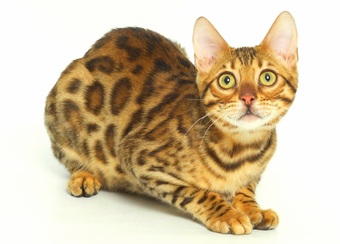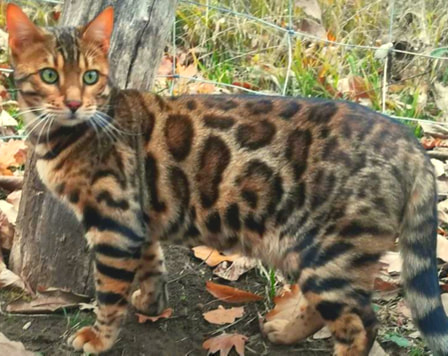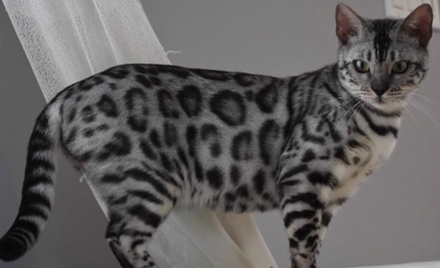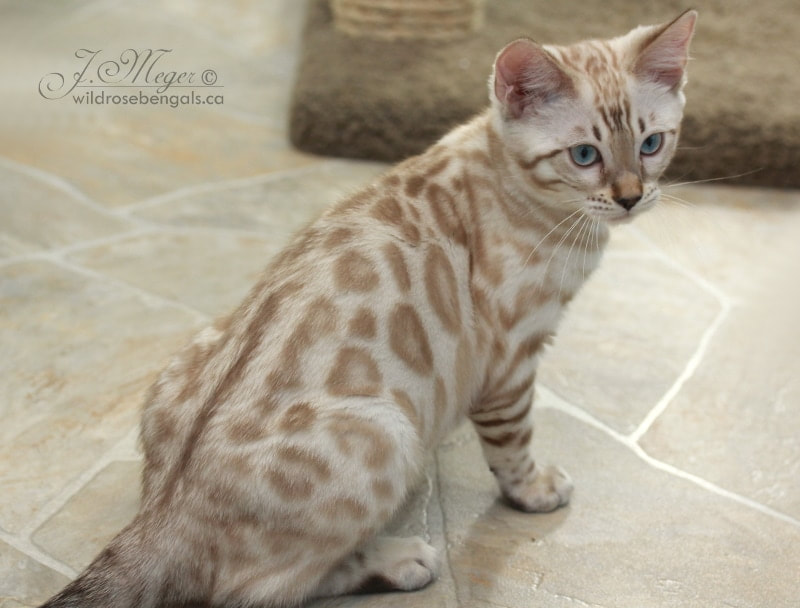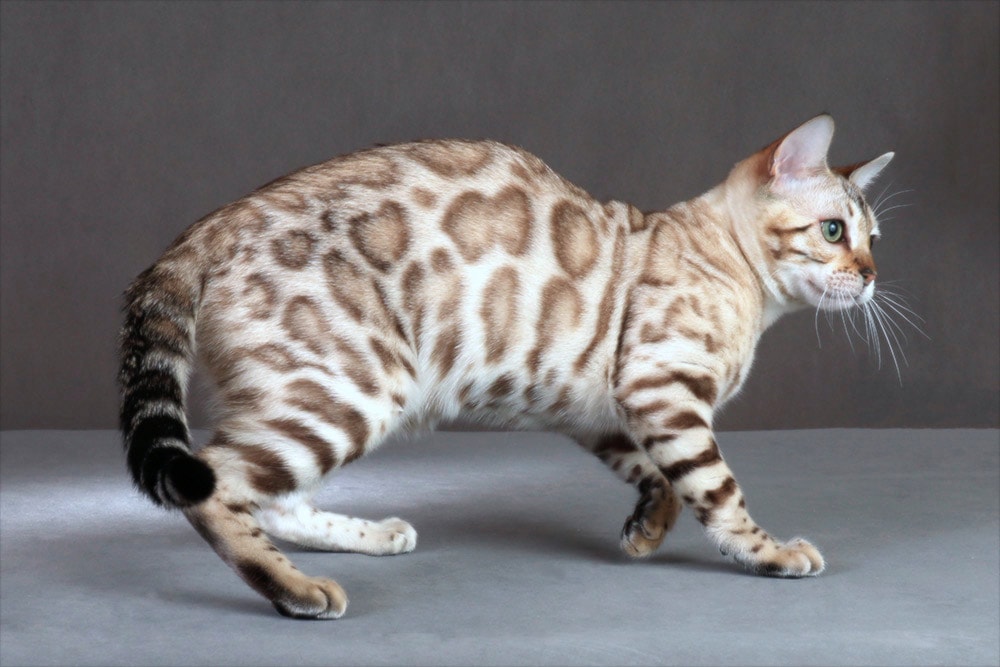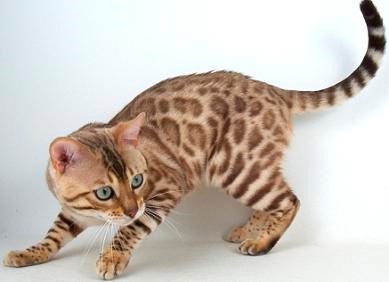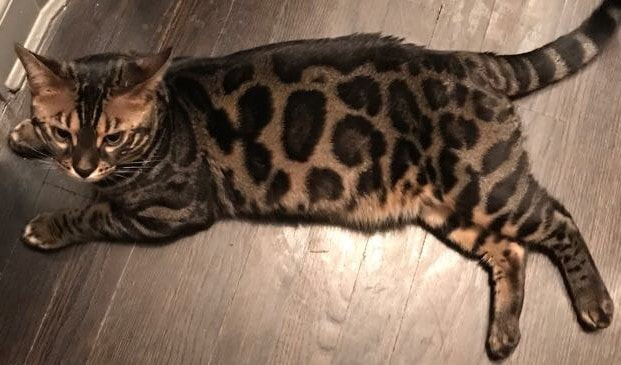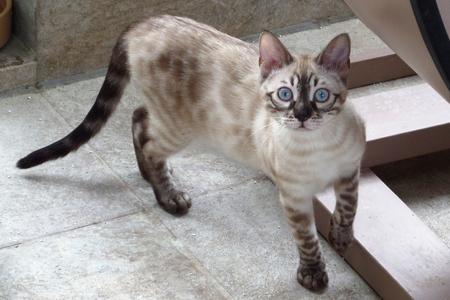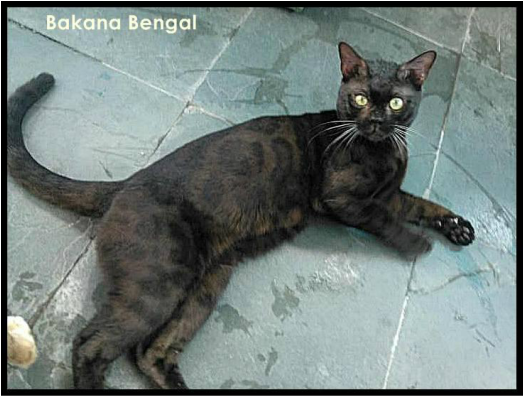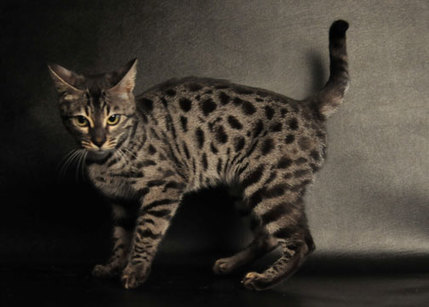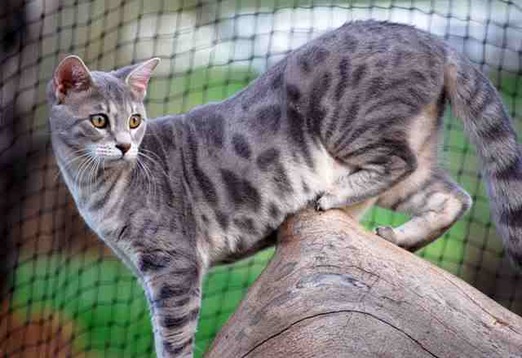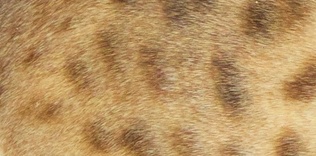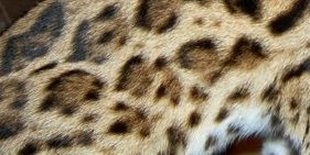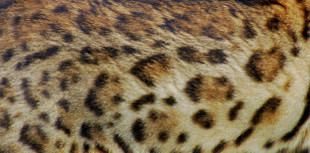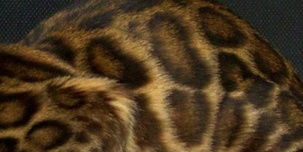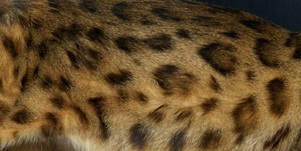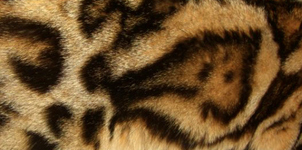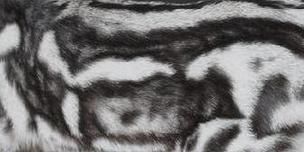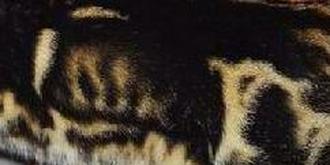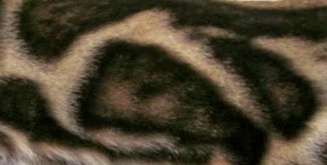Bengal Colors & Patterns
Domesticated Bengal cats share many of the physical traits with various wild cats throughout the world while maintaining a distinctly positive social personality. As you can see in the photo gallery many wild cats have the same swirling stripes and patterns found within the Marbled Bengals as well as some Spotted Bengals. Notice the shared horizontal stripes/connected spots near the spine and the vertical stripes/connected spots near the ribs, known as "rib bars." Panthers are in fact just a Melanistic form of the Leopard. The same genetics applies to Bengals which create Menalisitic Bengals, or miniature Panthers!
|
|
|
Currently the colors we breed for are: Brown, Silver, Mink, and Lynx in the regular & Charcoal versions.
Bengal Coat ColorsBrown BengalsWe currently Breed for this color!
Brown Bengal cats have green or golden eyes and come in a wide color range with descriptive terms such as golden, creamy, caramel, taupe, honey, tan, beige or red. The brown Bengal is known for its leopard spots which are black or a deep brown pattern. Every Bengal regardless of color is capable of having Brown kittens since this is the default color. The example above is our Stud Quint. Silver BengalsWe currently Breed for this color!
Silver Bengal's have a background color that is a shade of white or silver in color with dark ink like black/grey spots (rosettes) or a marble pattern. Their eye color is green or golden. Silver Bengals are genetically just Brown Bengals but with an inhibitor gene added that washes out the Brown color. The above example is a cousin to our Silver Stud Zorro and therefor a good example of the Silvers we produce. One Silver parent is required to produce Silver kittens regardless of ancestry. Snow Bengals (Family)The Snow Bengal term refers to a group of colors with three distinctive genetic variations being the Seal Lynx Point, the Seal Mink and the Seal Sepia.
Seal Lynx (genetically a "cs, cs" Snow) We currently Breed for this color! The SLP is the lightest of the snow group in color and most often is born white or with very faint markings. Their pattern usually comes in later and most often starting at the points (face, tail, legs). The one very unique thing about the SLP is that they are the only Bengal color that keeps the clear ice blue eye color that all Bengal kittens are born with. Genetically they have 2 Siamese genes. Lap Leopard Bengals currently does produce the Seal Lynx. Seal Mink (genetically a "cb, cs" Snow)
We currently Breed for this color! The SM will usually be born with a detectable pattern that will usually darken some as they grow. The color background of the SM is usually in ivory, cream or buff with an almost caramel-chocolate tone to their spotted or marbled pattern. Sm's have aqua or blue/green eyes. Genetically they have one Siamese and one Burmese gene that gives the intermediate color. Only our queen Sahara can produce the Mink color. Seal Sepia (genetically a "cb, cb" Snow)
We do NOT Breed for this color! Are usually the darkest of the snow group and are most often born with a distinctive pattern in seal brown to dark seal brown spotted or marble pattern. The SS eye color is green or gold. Genetically they have 2 Burmese genes. Currently, we don't produce this color. Charcoal BengalWe currently Breed for this color!
Charcoals have very little to no rufusing in their wild dark greyish and/or dark brownish background color. They will have very dark (if not black) spots or marble pattern. Charcoals have a dark "mask" on their face and sometimes a thick black stripe running along the back, also known as a "cape". Oftentimes, the cape will be the thickest at birth and will recede with age. How much does the cape recede? Depends on the personal development of the kitten. There are 2 versions of charcoals: The "light" version has genotype Apb/Apb and carries a lot of charcoal characteristics. They may have a "mask" and/or a "cape" but these can be absent, less dramatic, or the same as a dark version. The "dark" version has genotype Apb/a and the classic "mask" or "cape" characteristics tend to be dark, more dramatic. A commonality between both types is that the black is more prevalent. It is simply a darker version of whatever color (Brown, Silver, Lynx) it is on. In this way, Charcoal genetics modify other colors. Imagine an artist taking a charcoal pencil and drawing over everything with big black strokes. In high demand is the Charcoal Lynx, which we have added to our lineup of colors!! The Claim to Fame the Lynx has most is the crystal blue eyes and what better way to make them really "pop" then with a nice dark Charcoal Mask? With darker markings that gives this color a killer contrast with it's white background, this rare color is going to catch all the Rave! People are already lining up on the wait lists for it!
Melanistic/Panther (Black) Bengal
We do NOT Breed for this color!
This is a color that has a black background with faint dark brown-black spotted pattern which can sometimes only be seen in natural sunlight. In the above photo album is a picture of Melanistic Jaguars for your reference. Genetically they have 2 non-agouti genes. Our Queen Shadow Walker is, in fact, a Melanistic herself and can produce the Melanistic color with our new stud Havoc . Often viewed as "Mini Panthers" as they carry the same color genetics that produce the Panther color in nature. Many believe Panthers are a separate species of cat, when in fact, they are but Leopards and Jaguars that just carry these same extra Melanistic genes that turn them completely black. A brand new color borrowed from nature. Smoke Bengal
Blue Bengal
We are ending the Blue color line in 2021!
Basically the melding of the Russian Blue color with the Bengal leopard spots! Blue Bengal's color tends to have a buttery-peachy toned background color with bluish-gray spotted or marbled pattern. The Blue Bengal's pattern and markings will never turn black. This dilute color is not found in the wild cat species and therefore currently not considered for inclusion in the breed. Genetically they carry two copies of the dilute gene. In addition to Blues we also produce the Charcoal Blue variety! |
Bengal Spotted PatternsAlthough there are only two patterns under which Bengals Cats are shown (Spotted or Marble) descriptive terms are used to define the types of patterns. Single-Spotting, Cluster Rosettes, Paw-Print Rosettes, Doughnut Rosettes, Arrowhead (Rosettes), Embryonic Rosettes are the most common terms. All of these styles are classed for showing under "spotted".
Single-Spotted
A Single-Spotted pattern has no second color to the spot there is only the background color of the cat and the one spot color. This example is from our Queen Sahara.
Rosette Color PatternsThe rosette color pattern has a distinct alternate color different from the cats background color that is then "outlined or edged" by a darker or different distinctive color. Most Bengal Cats will in fact display a range of rosette styles within their coat pattern which lends to the random unique look the Bengal displays.
Cluster Rosettes
Cluster Rosettes are a pattern of small spots forming clusters around the second “inner” color that is different from the background.
Paw-Print Rosettes
Paw-Print Rosettes are open on one side and there are spots edging the second color creating a pattern that looks like paw prints walking across the background.
Doughnut Rosettes
Doughnut Rosettes are completely or almost completely outlined with a darker color and the center is a distinctly different color to that of the background. This example is from our Queen Ebony Spice.
Arrowhead Rosettes
Arrowhead Rosettes are when a spot or rosette in triangular shapes with the “tip of the arrow” pointing toward the back of the body. This example is from our Queen Mystique.
Bengal Marbled Patterns
Tri-Color Marble
Tri-Color Marble pattern's have three distinctive colors present that make up the pattern and background.
Horizontal Flowing Marble
Horizontal Flowing Marble pattern's flows from the upper shoulder along the body to the back of the cat in a horizontal fashion. This style of marbling is highly desired in the marble pattern.
High Acreage Marble
High Acreage or Reduced Marble pattern's have a high percentage of background color showing behind and between the marble pattern. This prized look is often referred to mimic the look of wild cats like the Margay, King Cheetah and the Marbled Cat noted in the photo gallery above.
Chaos Pattern Marble
Chaos Marble pattern's have a dramatic pattern compromised of swirls and splashes in different sizes and shapes of marbling flowing in a horizontal fashion.
Sheeted Pattern Marble
Sheeted or Closed Marble pattern's have a high ratio of marbled pattern to background color. Kittens born with this pattern can take up to two years before their coat fully opens up. It's exciting to see what is "behind" the sheeted pattern once the Bengal fully matures.
Bull's-eye Marble
Bulls-eye Marble pattern's have a circular presentation on the marble pattern with a round center inside the circle creating a bulls-eye in the pattern on the side of the cat. This is not desirable and is known as the "classic Tabby" pattern which we do not want to perpetuate in the Bengal Breed.
|
